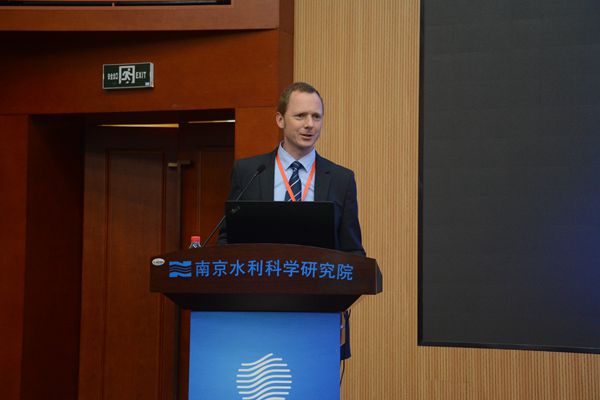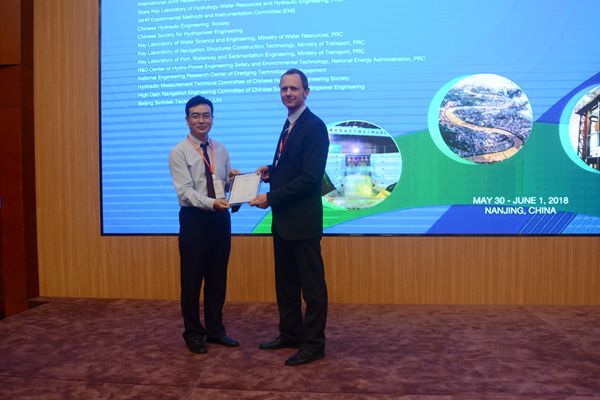
德国联邦水运工程研究院河流工程研究所副所长Sven Wurms做《Growing challenges in river engineering - What contribution can hybrid modeling make》的学术报告  南京水利科学研究院水工水力学研究所副所长王晓刚教授为Sven Wurms颁发证书 Abstract: Development and management of German waterways is a demanding task that is scientifically accompanied by the Federal Waterways Engineering and Research Institute (BAW). Among others fields, river engineering faces ever-growing challenges as sustainable development of large rivers implies highly integrative approaches in order to reliably satisfy a multitude of conflicting objectives. Hybrid modeling, defined as a combination of at least two complementary methods, is powerful, as it intends to combine benefits from different methods, e. g. numerical modeling and laboratory scale modeling. It can also contribute to the improvement of methods as well as aid in fundamental research on specific phenomena. In river engineering, particularly the field of morphodynamics is subject of ongoing research. A navigational bottleneck in a very sharp bend on the Middle Rhine in Germany shows a highly complex setting in terms of hydro- and morphodynamics. Sediment transport and deposition on highly jointed bedrock, accompanied by granular segregation and sorting, are still poorly understood. Consequently, identifying suitable river training measures is by no means a task that can be worked on with one method alone. Consequently, a 3-D numerical model is jointly operated with a scale model with movable bed, the latter covering the morphodynamic phenomena. Innovative approaches are developed, e. g. to represent bi-modal grain-size distributions by a mixture of three lightweight materials in the scale model. Hybrid modeling exhibits its strengths in pre-selection of river training measures, filling gaps in field data and validating complex sediment transport patterns through hydrodynamic simulation in the 3-D model. All this results in a very good agreement between sediment transport and deposition seen in the scale model and those observed in the field. Hybrid modeling usually induces extra efforts. Nevertheless, they pay off as hybrid modeling satisfies central needs in river engineering projects, first of all the need for high quality and profound results. Keywords: hybrid modeling; river engineering; laboratory scale model; 3-D hydrodynamic- numerical model; waterway; Rhine; sediment transport; bedrock
|